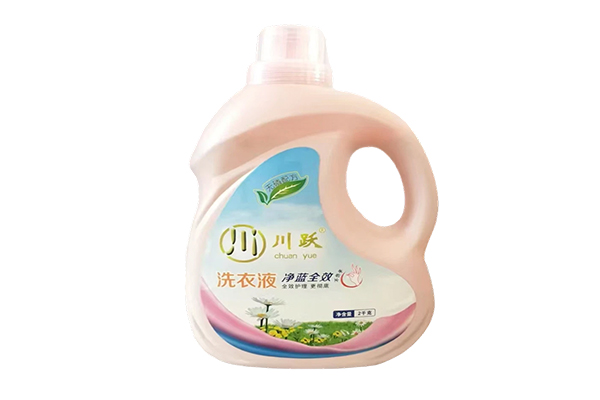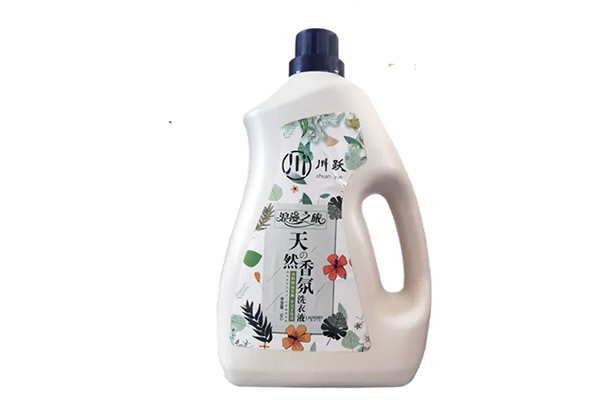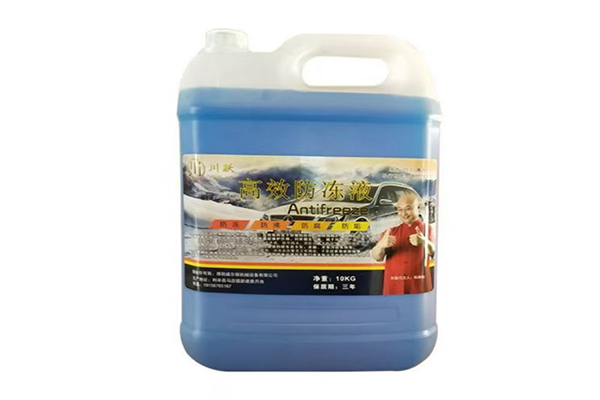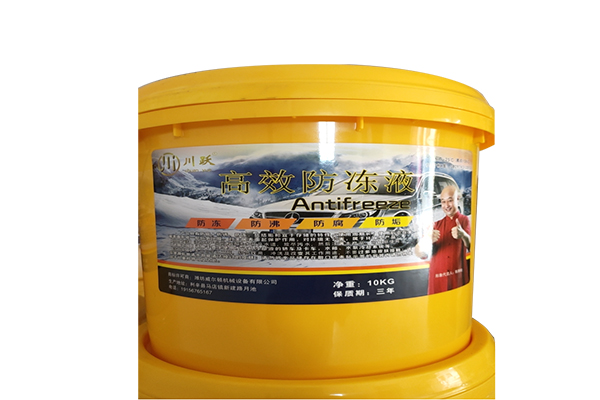The Science Behind the Degreasing Power of Dishwashing Liquid
Release Time : 2025-10-10
Every day in the kitchen, faced with greasy dishes, spatulas, and stovetops, a few drops of dishwashing liquid, combined with a rinse of clean water, quickly dissolve the grease and wash it away. This seemingly routine cleaning process hides a subtle scientific principle. Dishwashing liquid's ability to easily tackle stubborn grease doesn't rely on brute force, but rather on its unique chemical structure and physical mechanisms, breaking down the natural barrier of "water and oil incompatibility." The true secret to its degreasing power lies in its core ingredient, the surfactant.
1. The "Natural Enemy" Relationship Between Water and Oil: The First Challenge of Cleaning
Water is a polar molecule, while oil is a non-polar substance. This difference in molecular polarity prevents the two from mixing—this is the fundamental principle of "water and oil do not mix." When grease adheres to dishware, simply rinsing with water prevents the water molecules from effectively penetrating or enveloping the oil droplets, making it difficult to remove the grease. Traditional cleaning methods, such as hot water or mechanical abrasion, while effective, are inefficient and labor-intensive. Dishwashing liquids were invented to address this fundamental conflict. They act as a "diplomat" between water and oil, enabling them to coexist peacefully, resulting in efficient cleaning.
2. Surfactants: The "Molecular Key" to Destroying Oil Stains
The core component of dishwashing liquid is surfactants. These molecules have a unique structure: one end is hydrophilic, while the other is lipophilic, making them known as "amphiphilic molecules." When dishwashing liquid is added to water, the surfactant molecules rapidly migrate to the interfaces between water and air, and between water and oil. The hydrophilic ends remain in the water, while the lipophilic ends penetrate into the oil, acting like hooks to firmly grasp the oil molecules. This process significantly reduces the surface tension of water, allowing water to more easily wet the surface of dishes and penetrate between the oil and the dishware. As the dishwashing liquid is rubbed or flushed by water, the surfactants break up the large oil film into fine droplets, which are then encapsulated to form "micelles." In the micelle structure, the lipophilic ends envelop oil droplets inward, while the hydrophilic ends bind to water outward, keeping the oil droplets stably suspended in the water and ultimately washed away by the current. This emulsification process is the key mechanism for dishwashing liquid degreasing.
3. Formula Synergy: The "Under the Scene" Key to Enhanced Cleaning Power
While surfactants are the primary degreasing agents, the high cleaning power of modern dishwashing liquids also benefits from the synergistic effects of various auxiliary ingredients. For example, solubilizers help dissolve fragrances and pigments, stabilizing product properties; pH adjusters maintain a weak alkaline solution, aiding in the saponification of animal and vegetable oils and improving cleaning efficiency; and enzymes break down proteins and complex lipids, making them particularly effective for treating aged grease. Furthermore, while foaming is not a direct indicator of degreasing performance, an appropriate amount of foam can increase the dwell time of the dishwashing liquid on dishware surfaces, enhancing the cleaning experience. Many brands optimize surfactant ratios to achieve different functional positioning, either "low-foaming, high-efficiency" or "high-foaming, easy-rinsing," to meet diverse usage scenarios.
4. Safety and Environmental Protection: Deeper Considerations Beyond Degreasing
With rising public awareness of health and environmental protection, the scientific underpinnings of dishwashing liquid extend beyond degreasing power to include safety and sustainability. Traditional dishwashing liquids may contain phosphates, formaldehyde-releasing substances, or irritating fragrances. Long-term exposure can cause skin allergies or impact aquatic ecosystems. Today, more and more products are incorporating plant-based surfactants, biodegradable formulas, and phosphate-free designs, striving to effectively remove grease while minimizing the burden on the environment and human health. Furthermore, the proper use of dishwashing liquid is crucial. Excessive use is not only wasteful but can also leave residue. It is recommended to dilute with warm water, gently clean with a sponge or brush, and rinse thoroughly to ensure no chemical residue remains.
The degreasing power of dishwashing liquid goes far beyond the simple concept of "more foam, better cleaning." It involves a delicate interplay of molecules at the microscopic level, a scientific triumph of surfactants that break down the water-oil barrier and emulsify grease. From home kitchens to industrial cleaning, the wisdom of chemistry, physics, and materials science lies behind this everyday product. Understanding its scientific code can not only help us clean dishes more efficiently, but also guide us to make rational choices and use them scientifically, making every cleaning safer, more environmentally friendly and sustainable.
1. The "Natural Enemy" Relationship Between Water and Oil: The First Challenge of Cleaning
Water is a polar molecule, while oil is a non-polar substance. This difference in molecular polarity prevents the two from mixing—this is the fundamental principle of "water and oil do not mix." When grease adheres to dishware, simply rinsing with water prevents the water molecules from effectively penetrating or enveloping the oil droplets, making it difficult to remove the grease. Traditional cleaning methods, such as hot water or mechanical abrasion, while effective, are inefficient and labor-intensive. Dishwashing liquids were invented to address this fundamental conflict. They act as a "diplomat" between water and oil, enabling them to coexist peacefully, resulting in efficient cleaning.
2. Surfactants: The "Molecular Key" to Destroying Oil Stains
The core component of dishwashing liquid is surfactants. These molecules have a unique structure: one end is hydrophilic, while the other is lipophilic, making them known as "amphiphilic molecules." When dishwashing liquid is added to water, the surfactant molecules rapidly migrate to the interfaces between water and air, and between water and oil. The hydrophilic ends remain in the water, while the lipophilic ends penetrate into the oil, acting like hooks to firmly grasp the oil molecules. This process significantly reduces the surface tension of water, allowing water to more easily wet the surface of dishes and penetrate between the oil and the dishware. As the dishwashing liquid is rubbed or flushed by water, the surfactants break up the large oil film into fine droplets, which are then encapsulated to form "micelles." In the micelle structure, the lipophilic ends envelop oil droplets inward, while the hydrophilic ends bind to water outward, keeping the oil droplets stably suspended in the water and ultimately washed away by the current. This emulsification process is the key mechanism for dishwashing liquid degreasing.
3. Formula Synergy: The "Under the Scene" Key to Enhanced Cleaning Power
While surfactants are the primary degreasing agents, the high cleaning power of modern dishwashing liquids also benefits from the synergistic effects of various auxiliary ingredients. For example, solubilizers help dissolve fragrances and pigments, stabilizing product properties; pH adjusters maintain a weak alkaline solution, aiding in the saponification of animal and vegetable oils and improving cleaning efficiency; and enzymes break down proteins and complex lipids, making them particularly effective for treating aged grease. Furthermore, while foaming is not a direct indicator of degreasing performance, an appropriate amount of foam can increase the dwell time of the dishwashing liquid on dishware surfaces, enhancing the cleaning experience. Many brands optimize surfactant ratios to achieve different functional positioning, either "low-foaming, high-efficiency" or "high-foaming, easy-rinsing," to meet diverse usage scenarios.
4. Safety and Environmental Protection: Deeper Considerations Beyond Degreasing
With rising public awareness of health and environmental protection, the scientific underpinnings of dishwashing liquid extend beyond degreasing power to include safety and sustainability. Traditional dishwashing liquids may contain phosphates, formaldehyde-releasing substances, or irritating fragrances. Long-term exposure can cause skin allergies or impact aquatic ecosystems. Today, more and more products are incorporating plant-based surfactants, biodegradable formulas, and phosphate-free designs, striving to effectively remove grease while minimizing the burden on the environment and human health. Furthermore, the proper use of dishwashing liquid is crucial. Excessive use is not only wasteful but can also leave residue. It is recommended to dilute with warm water, gently clean with a sponge or brush, and rinse thoroughly to ensure no chemical residue remains.
The degreasing power of dishwashing liquid goes far beyond the simple concept of "more foam, better cleaning." It involves a delicate interplay of molecules at the microscopic level, a scientific triumph of surfactants that break down the water-oil barrier and emulsify grease. From home kitchens to industrial cleaning, the wisdom of chemistry, physics, and materials science lies behind this everyday product. Understanding its scientific code can not only help us clean dishes more efficiently, but also guide us to make rational choices and use them scientifically, making every cleaning safer, more environmentally friendly and sustainable.







